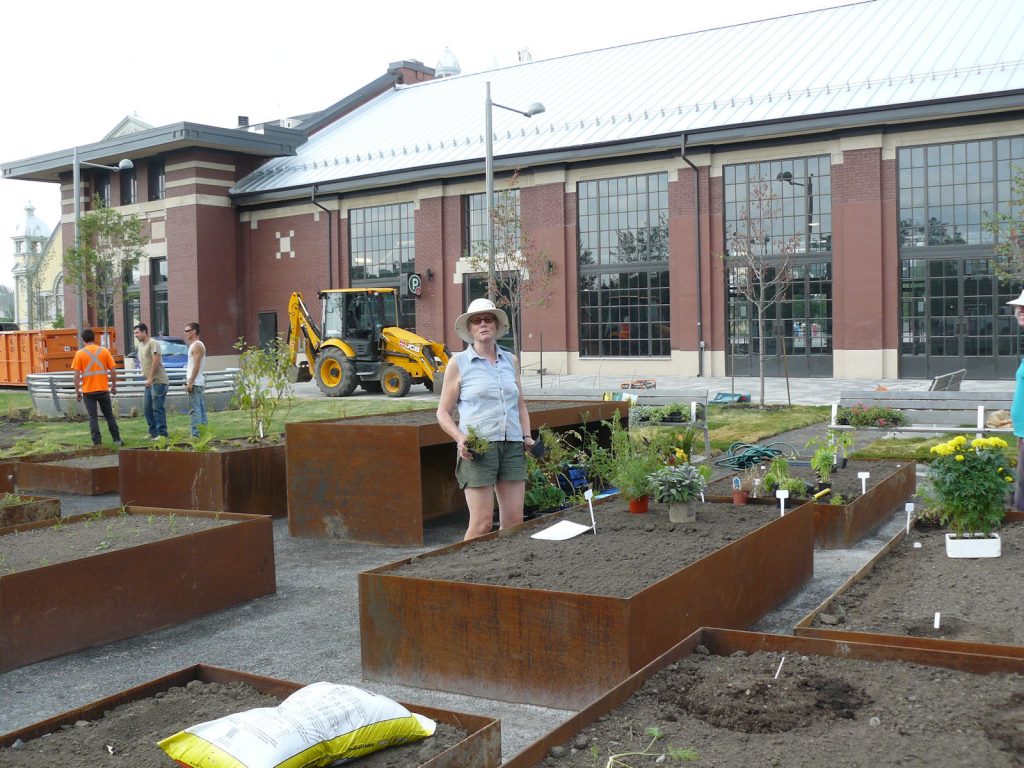by Lynn Armstrong, photos by Sandy Garland
As part of the creation of the new Lansdowne Park in 2015, the area to the east of the relocated and restored Horticulture Building was designed with 25 raised beds. Seven were planted with native plants of significance to the Algonquin Aboriginal community.
The remaining 18 beds are intended to be educational demonstration beds designed to highlight food production, Ottawa’s horticultural heritage, and a sampling of other garden experiences that exist in Ottawa, like the Fletcher Wildlife Garden. Lynn Armstrong, of the Ottawa Horticultural Society, and Carol Macleod designed and installed the original plantings in those beds. A few dedicated volunteers help with ongoing maintenance.

In 2015, Lynn (pictured here) took over design and planting of 18 demonstration beds next to the Horticulture Building at Lansdowne. The raised beds are made of metal, with soil of various depths. A water tank is available nearby and the beds were watered frequently by maintenance staff.
Various themes were developed and detailed designs were created for each bed. There is a Peter Rabbit bed for children, a square-foot gardening bed, a sunflower bed, plants for natural dying of fabric and fibers. a bed of new annual and perennial varieties, a fairy garden, an Ottawa festivals bed, and four beds have been combined into a “potager,” a traditional kitchen garden. One bed is representative of the school gardening movement of the early 1900s. Another features heritage tomatoes and basil. Two beds are dedicated to heirloom vegetables used in the vacant lot gardening movement of 1917 during the first world war, and two others contain newer more unusual vegetables developed more recently. One bed is designed as a pollinator garden, with locally native species donated by the Fletcher Wildlife Garden.
One overarching theme of the garden is to grow food and flowers together to encourage food production. We highlight colourful vegetable varieties and edible flowers. The side benefit of growing both vegetables and flowers is that the garden attracts a large variety of pollinators and birds and demonstrates that a wide diversity of plants can be grown in raised beds. All produce is harvested and donated to the local food bank.

In 2023, the raised beds are overflowing with a wide variety of plants – not all the ones Lynn originally planted, but keeping to the themes.
Lynn Armstrong is a landscape designer specializing in heritage landscape research and restoration. She is a long-time member of the Ottawa Horticultural Society and a member of the Wild Pollinator Partners network.
Note: During WPP pollinator surveys in 2019, we visited the Lansdowne beds twice. Both times, we found a wider variety of pollinators here than at any other garden we surveyed. We attribute this to the variety of plants species available. See Finding pollinators at Lansdowne (August) and Finding pollinators at Lansdowne 2 (September).


